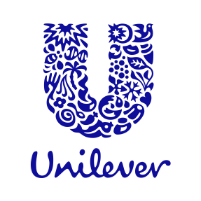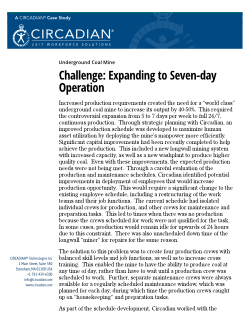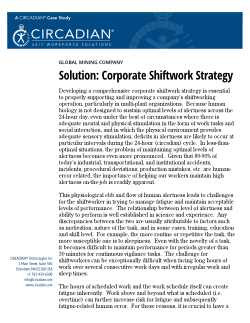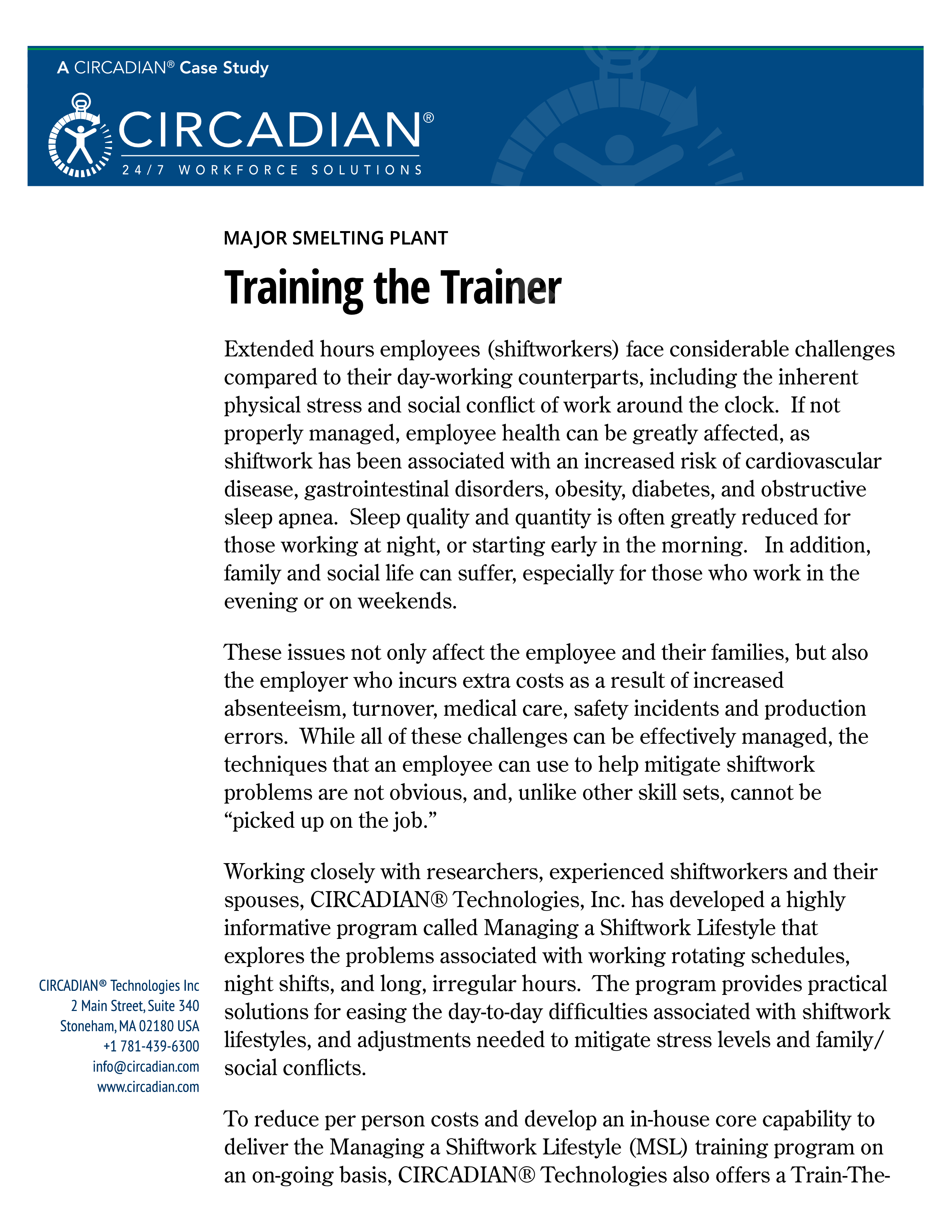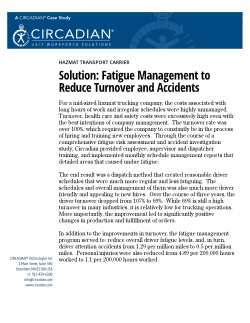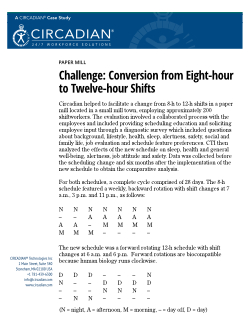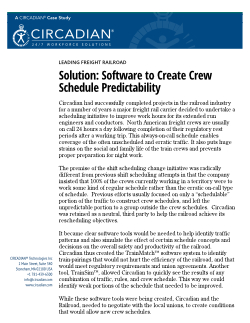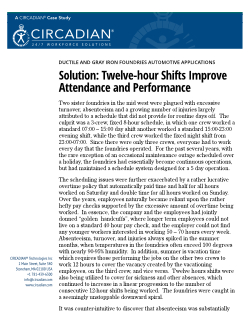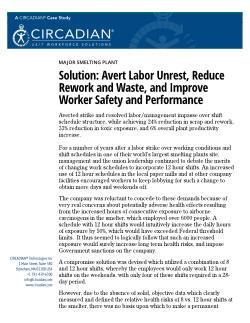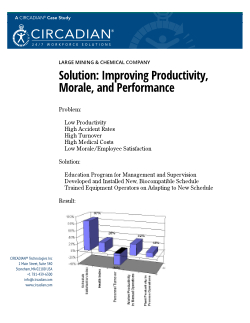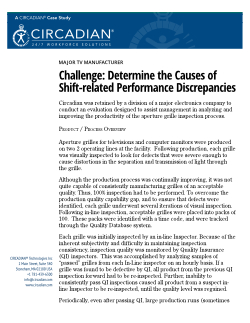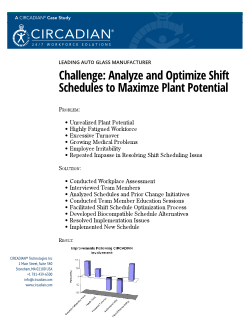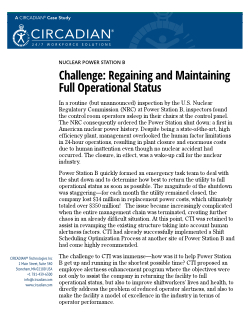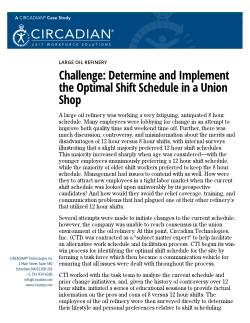This Nuclear Power Station A had worked an 8-hour, counter clockwise rotating schedule for approximately 20 years. However, an aging workforce was experiencing increasing problems with fatigue and quality of life issues. Moreover, new employees were lobbying for change. At the same time, management was dealing with over-staffing issues, decreased productivity and increased pressure to reduce costs.
The company recognized the need to restructure and downsize in order to remain competitive. Internal staffing level assessments indicated that a change from a six crew structure to five crews would save some $800,000 in payroll costs. While some employees would not retain their current position, all were to be re-assigned or eliminated through normal attrition. There was obviously considerable union resistance to the loss of jobs. In addition, the IBEW was on record as being opposed to 12-hour shifts, which many employees preferred.
The Nuclear Power Station retained CIRCADIAN® Technologies, Inc. (CTI) to help find a solution to the various management, union and individual issues involved in downsizing and determining a new schedule. The challenge to CTI was to develop a five crew schedule which met all of management’s needs but at the same time would be acceptable to the union and the employees.
CTI proceeded to facilitate a proven employee-driven process to self-select a preferred schedule within clearly defined boundary conditions and operating requirements. This procedure, called a Shift Schedule Optimization Process (SSOP), provided a step-by-step, systematic method for determining the optimal schedule for the Power Plant. In addition, CTI was asked to conduct an independent staffing level analysis to validate management estimates and ensure adequate staffing for the new 5 crew schedule.
A task team, consisting of management, labor representatives and employees was created, and extensive educational and communication sessions were conducted by CIRCADIAN® in order to build support and consensus, as well as to keep the employees informed and involved in all aspects of the selection process. Downsizing to a five crew system remained the fixed criteria. However, CTI determined though discussions with employees and the task team that there was considerable interest in 12-hour schedules, and that local union leadership might be willing to support such a schedule on a trial basis with a side letter agreement.
CTI then conducted scheduling education classes which dispelled the myths of 8 and 12 hour shifts, and which provided factual information that enabled informed decision making. The SSOP process was then proceeded with a site-wide preference survey to determine the employee criteria. CTI then determined the best mathematical possibilities for meeting the employee criteria, while satisfying the specified operational parameters. CTI facilitated all stages of the process to provide the technical support needed to factually determine the employee criteria and to evaluate all of the scheduling possibilities.
Concurrently, CTI conducted a mathematically precise staffing level analysis, utilizing proprietary shift relief algorithms for each job classification. The results identified optimal staffing levels that would save over $2.25 million in annual payroll costs, far exceeding company estimates of $800,000. This improved productivity by some 16% overall. Moreover, no one lost their jobs other than those who opted for retirement. The remaining, displaced workers were reassigned to other parts of the site that were operating under a separate cost structure.
In addition to the payroll savings, the end result of CTI’s SSOP process was a more efficient and competitive 5 crew, 12-hour schedule that was selected by the employees and acceptable to the union and management. The new schedule was also biocompatible, (physiologically less stressful and easier to adapt to), and it reduced the levels of cumulative sleep deprivation and fatigue. The new schedule featured twice as many days off and twice as many weekends off as the original 8-hour schedule, and it provided a long break in every 28-day cycle—dramatically improving employee quality of life.
The union and employees have consequently taken ownership of the new schedule, and it was permanently ratified after the 12-month trial period. Employee morale/attitudes have dramatically increased. And with the reduced costs, higher productivity, and increased employee satisfaction index, the power station was able to achieve its goals and objectives for increased competitiveness.
Trusted Partners and Clients
Building Success Together.


























